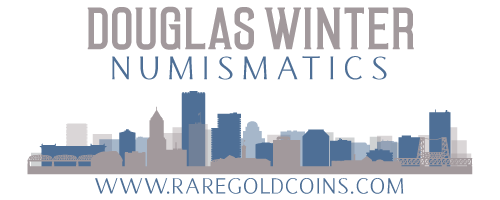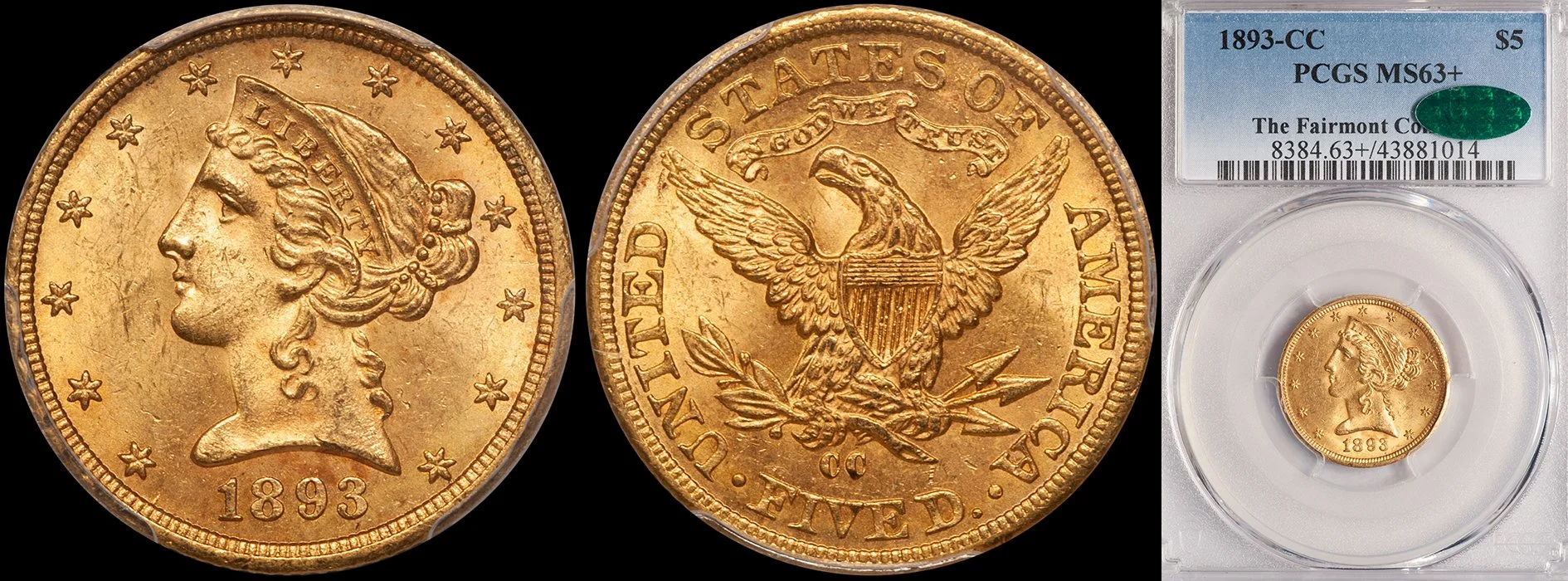One of the most confusing areas for a new coin collector to understand is pricing. Many collectors have experience in purchasing stocks and are used to being able to open a daily newspaper and seeing accurate price quotes for a specific item. In most cases, the coin market operates on an entirely different basis.
Stocks and bonds are easy to price because they are commodities. Every regular share of IBM is the same and is valued accordingly. Most gold coins are not regarded as commodities due to their rarity and the fact that coins which are graded similarly may have significant differences in value due to their appearance.
The easiest United States gold coins to price are very common issues like Uncirculated St. Gaudens double eagles. As an example, a Mint State-63 1924 is a coin that has a fairly standard value. It may trade on a wholesale level for $375 and on a retail level for $390. In fact, the buy/sell spread of such a coin is generally within 5% and there is little difference in price for these coins among sellers.
Slightly rarer United States gold coins are still relatively easy to price. An example is a common date Mint State-63 $5.00 Indian Head gold piece. This is not a very easy coin to find but it is certainly not a "rare" issue. Generally speaking, an average quality example common date in Mint State-63 sells in the $1,100-1,300 range. But there are exceptions to this rule that may prove confusing to the novice collector.
In an auction, there are two PCGS graded Mint State-63 1909 half eagles. One is a average quality coin and it sells for $1,150. Another is a very high end coin and it realizes $1,800. Why is there such a big difference in price? The answer is simple: at least two bidders felt that the high end example had a good chance of becoming a Mint State-64 if it were removed from its encapsulation and resubmitted. In a Mint State-64 holder, the coin is worth $2,500-2,750. The buyer of this coin is, in essence, gambling that he can upgrade it and, in the process, sell it for a nice profit.
High end or "PQ" coins are anomalies that do not neatly fit into pricing structure. Generally speaking, pricing guides (see below) reflect price levels for average quality pieces.
There are numerous pricing guides for United States gold coins that are available to the collector. There is no one single source that is "the best." Most experts, myself included, use a variety of pricing guides as well as instinct for pieces that are particularly hard to price.
"A Guidebook to United States Coins" (aka "The Redbook")
This is an overlooked but surprisingly accurate pricing guide that is both convenient and reasonably priced. Each edition of this annual publication has suggested valuations for most United States gold coins in four grades: VF-20, EF-40, AU-50 and MS-60.
The valuations include the input of many experts, including myself. These valuations are meant to be "retail" prices for average quality coins. There are good and bad points about the prices in "The Redbook."
The good points include the convenience of this book (it can be bought in any good book store or on-line), the impressive credentials of its contributors and the broad scope of its information. The negative points include the fact that the pricing is done at least a year in advance and there are not enough grades listed for each issue. A problem that I have always had with "The Redbook" is it continues to list prices for coins that do not exist in a specific grade.
Overall Rating: Very good for beginners but probably not likely to be used very often by advanced collectors.
"Coin Dealer Newsletter" Monthly Quarterly Newsletter
The "Coin Dealer Newsletter" (www.greysheet.com) is a pricing guide for United States coins that is published weekly. In addition, its parent organization publishes a more in-depth newsletter, referred to by most dealers as "Quarterly," that focuses on series that are collected by date.
The newsletters that are of interest to United States gold coin collectors are "Quarterly II" which includes pricing for gold dollars, quarter eagles and three dollar gold pieces and "Quarterly III" which has pricing for half eagles, eagles and double eagles. Each issue lists prices for "VF," "XF," "AU", MS-60, MS-63, MS-64 and MS-65 as well as four grades for Proof issues where applicable.
According to the editors of the CDN, they "report prices on national dealer-to-dealer buying and selling information. These wholesale prices result from our monitoring all possible sight-seen transactions and offers to buy and sell."
The best point about CDN pricing is the fact that it is carefully monitored and changed to reflect confirmed transactions. It is also very good for pricing coins that fall into the category of semi-better dates. Another good feature about the CDN is the fact that it lists prices for eleven different grades of Liberty Head gold coinage and eight different grades of pre-1834 issues. Negative points include the presence of just one XF and AU grade (making it especially hard to figure the values for EF-45 and AU-58 coins using these prices) and the fact that these supposedly "wholesale" numbers are available to any "retail" collector willing to subscribe to the CDN.
Overall Rating: An essential pricing source for the advanced collector.
Online Pricing Guides
With the advent of the Internet, a number of online pricing guides have become available to collectors. The best-known of these are Numismedia (www.numismedia.com) and the PCGS Daily Price Guide (www.collectorsuniverse.com).
These are extremely comprehensive price guides that are monitored and updated by knowledgeable consultants. They are meant to be "retail" guides for the collector.
In my experience, the values in these guides are fairly accurate for lower grade rare issue United States gold coins (Very Fine and Extremely Fine) and generic issues but tend to be somewhat inflated for higher grade coins.
At the present time, the jury is still out on these on-line price guides. There is no doubt in my mind that within a few years, one of these guides--or maybe an entirely new guide--will become the accepted industry standard for rare coin pricing.
Overall Rating: Some day, an online price guide will be the industry standard. But not just yet...
Coin World Trends
Coin World is published weekly and it has the largest circulation of any numismatic publication. One of the most popular features of this publication is its weekly "Trends" valuations for United States coins. Prices for United States gold coins are published every three weeks.
"Trends" is a retail guide to coin prices. According to its editors "sources for pricing include actual transactions, public auctions, fixed-price lists and any additional information acquired by Coin World staff." For Liberty Head issues, there are a total of ten different grades, ranging from Fine-12 to Mint State-65.
Most specialists in United States gold coins use "Trends" extensively. If you look at the inventory section in my web site you will note that my pricing is listed in relation to "Trends." I use it extensively when I am buying coins. I rate "Trends" as the most important pricing source for United States gold coins and strongly recommend that any serious collector have a copy of the current "Trends" pricing whenever he is making a purchase.
Overall Rating: Currently the single best pricing guide for rare United States gold coins.
Auction Prices
For certain issues, prices realized at auction is an extremely important way to determine price.
A number of United States gold coins are rare enough that the majority of offerings are at auction. If you do not have this information at hand, it is hard to price such coins. And, more often than not, if you are offered an example of a very rare coin, the chances are good that the exact piece you are looking at was recently sold at auction.
I would recommend that serious collectors receive each catalog issued by Heritage, Bowers and Merena, Superior, Goldberg and Stack's. Make certain that you also receive the prices realized lists issued by these firms a few weeks after the sale.
Overall Rating: A very good secondary pricing source, especially for esoteric, infrequently-traded items.
There are a few important factors to consider when using coin pricing guides. These include the following:
The prices in all of the guides discussed above reflect coins graded by reputable services such as PCGS and NGC. Coins that have been graded by less reputable services are often worth considerably less.
The prices in these sources are guidelines, not offers to buy or sell. In some cases they are too high; in others they are too low. As a collector, it is important to learn which issues are undervalued and which are overvalued.
Prices in the Coin Dealer Newsletter are representative of sight-unseen dealer-to-dealer transactions. In other words, if a published price level for a certain issue is $1,800 in "EF" this value equates to an offer that I would make another dealer without seeing the coin and assuming that it just barely qualifies at that level. A very nice EF-40 example could be worth more and an EF-45 could be worth multiples of this amount. Collectors should not expect to be able to buy many coins at CDN prices.
Unless you (or your dealer) has seen coins from a specific auction, the prices realized can be misleading. High end or "PQ" coins often sell for significant premium at auctions. But not all "PQ" coins upgrade and some turn out to be bad deals for their owners. There are also unique circumstances at auction, such as when two collectors both "have to own" a specific coin and wind up paying an enormous price in a battle of wills.
Coins in "name" auctions (such as Eliasberg or Bass) often bring more than in "ordinary" sales. Just because an 1855-C quarter eagle in EF-45 at the Bass auction sells for 30% over Trends does not mean that you should pay that much for a piece you are being offered.
It is always harder to price esoteric or infrequently-traded items than common issues. It is especially hard to price finest known or one-of-a-kind items. There is not set formula that says, for example, than an AU-55 is worth x% more than an AU-50 and x% less than an AU-58.
There are also no firm "ground rules" in regard to what to pay for a certain coin relative to its value in "Trends." Some coins are worth 65% of Trends while others are worth 150% of Trends. The best ways to determine that you are getting fair value are to establish a good relationship with a reputable dealer and to learn as much as you can about how the series you collect is priced.










